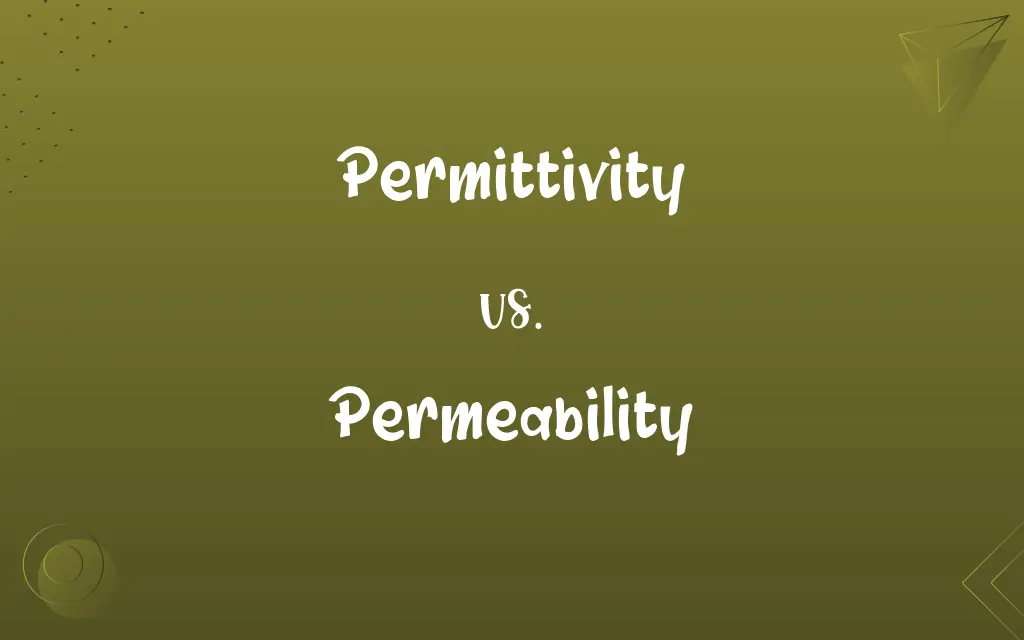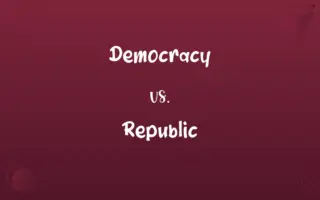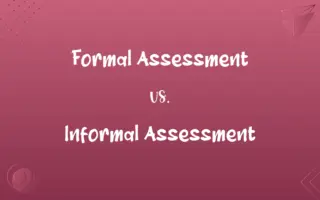Permittivity vs. Permeability: Know the Difference
Permittivity is a measure of how easily a material can polarize in response to an electric field, while Permeability measures how easily a material can support the formation of a magnetic field within itself.

Key Differences
Permittivity quantifies a material's ability to permit electric field lines to pass through it, indicating how much electric flux can be generated. In contrast, permeability is a measure of a material's ability to allow magnetic field lines to pass through, indicating the ease with which a material can be magnetized.
The permittivity of a material affects how it influences and interacts with electric fields, playing a crucial role in capacitor operation. On the other hand, permeability defines how a material responds to magnetic fields, crucial in the design of inductors and transformers.
Materials with high permittivity can store more electric charge, useful in insulators and dielectrics. Materials with high permeability can support stronger magnetic fields, important in magnetic cores and shields.
Permittivity is mainly concerned with electrical properties and is a critical factor in determining the speed of light in a material. Permeability focuses on magnetic properties, influencing how magnetic materials react to external magnetic fields.
Permittivity and permeability are fundamental in defining the electromagnetic properties of materials, with permittivity affecting electric field interactions and permeability affecting magnetic field interactions.
ADVERTISEMENT
Comparison Chart
Field Interaction
Electric fields
Magnetic fields
Measurement
Electric flux generation ability
Magnetic field support within material
Application
Capacitors, dielectrics
Inductors, magnetic cores
Property Type
Electrical property
Magnetic property
Importance
Speed of light in materials, insulators
Magnetic field strength, magnetic shielding
ADVERTISEMENT
Permittivity and Permeability Definitions
Permittivity
Permittivity indicates how much electric flux can be generated in a material.
Glass has a higher permittivity than air, making it a better insulator.
Permeability
Permeability is a material's ability to become magnetized under an external magnetic field.
The permeability of soft iron changes with the application of a magnetic field.
Permittivity
Permittivity is a property that affects the interaction between materials and electric fields.
The permittivity of vacuum is the baseline for comparing other materials.
Permeability
Permeability is crucial in the design of magnetic circuits and shielding.
Materials with high permeability are used to shield sensitive electronic equipment from magnetic fields.
Permittivity
In optics, permittivity influences the propagation of light through different media.
The varying permittivity of materials causes light to bend or refract.
ADVERTISEMENT
Permeability
Permeability measures how easily a material can support a magnetic field.
Iron's high permeability makes it an ideal core material for transformers.
Permittivity
Permittivity is key in determining the capacitance of a material in an electric field.
A material with higher permittivity is used to increase the capacitor's storage capacity.
Permeability
In geology, permeability refers to the degree to which a material can transmit magnetism.
The Earth's crust has varying permeability, affecting its magnetic properties.
Permittivity
Permittivity measures a material's ability to polarize in response to an electric field.
The high permittivity of the dielectric improves the capacitor's efficiency.
Permeability
Permeability is a factor in determining the inductance of a coil.
A coil wound around a high permeability core will have greater inductance.
Permittivity
A measure of the ability of a material to interact with an electric field and become polarized by the field, weakening the field within the material. The permittivity of a material is the product of the dielectric constant of the material and the permittivity of a perfect vacuum, which is defined to be about 8.854 × 10-12 farad per meter.
Permeability
The property or condition of being permeable.
Permittivity
(physics) A property of a dielectric medium that determines the forces that electric charges placed in the medium exert on each other.
Permeability
The rate of flow of a liquid or gas through a porous material.
Permeability
The property of being permeable.
Permeability
The rate of flow of a fluid through a porous material.
Permeability
(geology) A measure of the ability of a rock to transmit fluids (such as oil or water).
Permeability
(physics) A quantitative measure of the degree of magnetization of a material in the presence of an applied magnetic field (measured in newtons per ampere squared in SI units).
Permeability
The quality or state of being permeable.
Permeability
The property of something that can be pervaded by a liquid (as by osmosis or diffusion)
Repeatedly Asked Queries
How does permeability relate to magnetism?
Permeability describes how well a material can support and propagate a magnetic field.
Is high permeability always desirable?
High permeability is desirable in applications like transformers and inductors but not always in other applications.
What units are used for permittivity?
Permittivity is measured in farads per meter (F/m).
Can permittivity vary with frequency?
Yes, the permittivity of some materials changes with the frequency of the applied electric field.
Is permeability constant for all materials?
No, permeability varies among different materials and can also change with temperature and magnetic field strength.
What role does permittivity play in telecommunications?
Permittivity affects the propagation of electromagnetic waves, crucial in designing antennas and transmission lines.
Does vacuum have permittivity?
Yes, vacuum has a permittivity value, often referred to as the permittivity of free space.
What is the physical significance of permittivity?
Permittivity measures a material's ability to allow electric field lines to pass through it, affecting how it interacts with electric fields.
Can permittivity be negative?
In some metamaterials, permittivity can be effectively negative, leading to unusual electromagnetic properties.
What units are used for permeability?
Permeability is measured in henries per meter (H/m) or newtons per ampere squared (N/A²).
How does permittivity affect capacitors?
Higher permittivity materials increase the capacitance of capacitors by storing more electric charge.
How do changes in permittivity affect optical devices?
Changes in permittivity can alter the refraction of light, impacting the design of lenses and optical fibers.
What is the significance of permeability in electrical engineering?
Permeability is crucial in the design and functioning of magnetic devices like transformers and motors.
Why is permeability important in inductors?
Higher permeability materials increase the inductance of coils, making them more effective in inductors.
What is the relationship between permeability and magnetic fields?
Permeability determines how easily a material can be magnetized and supports the formation of magnetic fields.
Can materials have both high permittivity and high permeability?
It's rare, as materials typically specialize in either electric or magnetic properties, but some advanced materials exhibit both.
Are permittivity and permeability related to each other?
While they measure different properties, permittivity and permeability are both fundamental to understanding electromagnetic behavior in materials.
Are there applications where low permeability is preferred?
Yes, in applications like magnetic shielding, materials with low permeability are preferred to prevent magnetic field penetration.
How does soil permeability affect geology?
Soil permeability affects magnetic properties and is important in geophysical surveys and studies.
Does temperature affect permittivity?
Yes, temperature can affect the permittivity of materials, altering their dielectric properties.
Share this page
Link for your blog / website
HTML
Link to share via messenger









































































